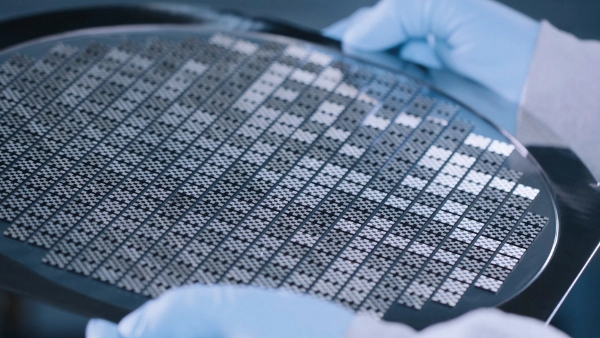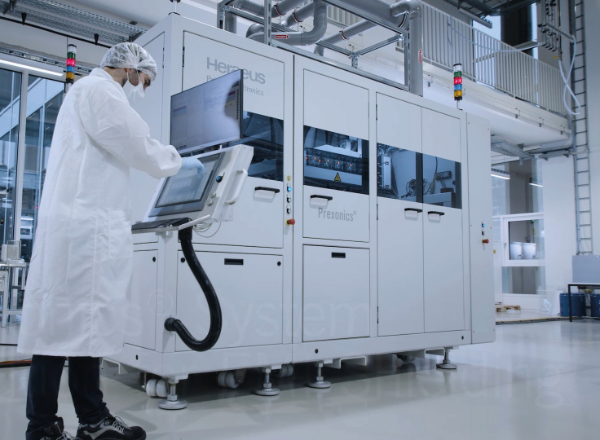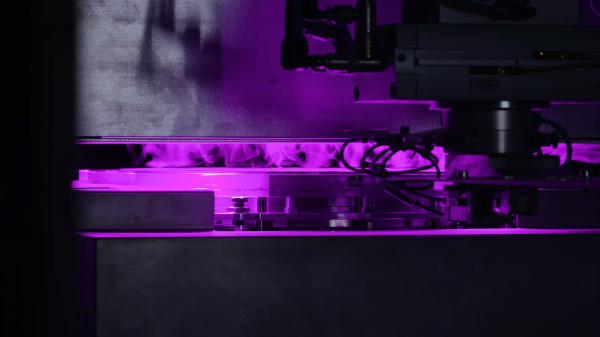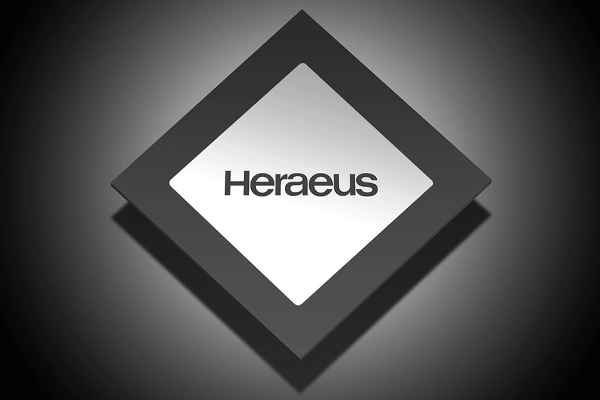Silver ink optimizes EMI shielding in 5G standard
Smartphones are becoming faster at extended functionality. Yet at higher frequencies electromagnetic interferences increase as well, especially as 5G technology is established more broadly. Without reliable shielding, modern cell phones would not work. Heraeus Printed Electronics has developed an innovative yet sustainable full system solution for shielding at package level: An ultra-thin silver layer that efficiently shields even the smallest components.

An industrial inkjet printer applies the particle-free silver ink selectively where protection against electromagnetic interferences (EMI) is required, for example on sensor, antenna, or radio frequency packages. The selective printing process does not require masking or etching anymore and essentially saves material, time and energy compared to traditional processes such as physical vapor disposition (PVD) sputtering. With Prexonics®, Heraeus Printed Electronics has developed a full system solution providing the equipment, material, and process from a single source.
Selective printing enables design freedom for packaging designers
The protective silver layer is printed with an accuracy of a twentieth of a millimeter and thermally cured. This way, the system solution supports the trend towards miniaturization. The digital printing system optimizes EMI shielding and ensures, for example, that high-frequency chips can transmit data ultra-fast - a requirement that is becoming increasingly important with the 5G standard in mobile communications.
The process allows chip designers extended freedom of design. This means the exact layout that a customer needs for a specific application can be printed. It is based on a CAD drawing that is flexible to modify. Therefore, designers are less limited by restrictions. "We are convinced that our inkjet process can give them more liberty to create innovative designs," says Franz Vollmann, Head of the Heraeus start-up Printed Electronics.

The process is suitable for further applications
The technology can be adapted for additional applications and industries, such as the automotive sector. Electromagnetic compatibility and thus reliable shielding play a far more important role in electric vehicles than in conventional drive technologies.
Another potential scope of application is the use of silver ink for metallization. "Our system is capable of printing a silver layer very efficiently and precisely to metallize surfaces," Vollmann explains. The technology could therefore replace the classic electroplating process.
In addition, silver is a good heat conductor and is well suited as a thermal interface material (TIM). It functions as a thermal intermediate layer that dissipates heat from electronic components into the environment and thus enables reliable operation. Prexonics® could therefore be used in thermal management. "The potential offered by our full system solution is far from exhausted," emphasizes Vollmann.


